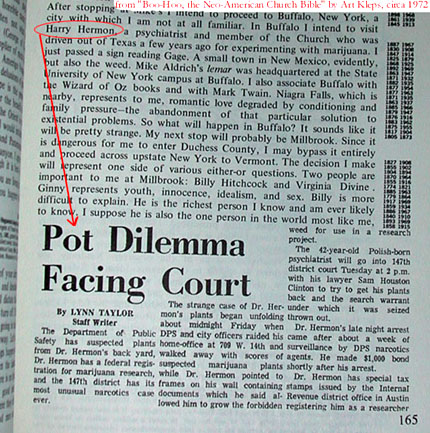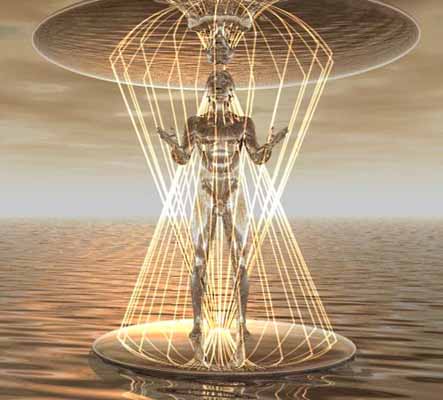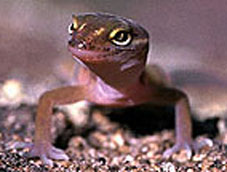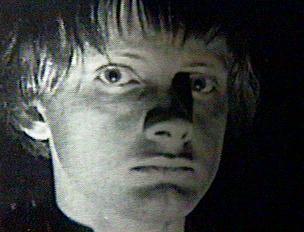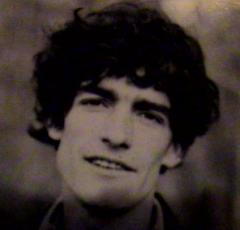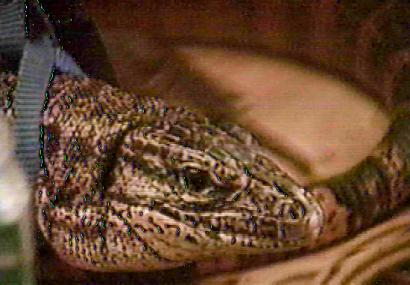
|
The story of how Austin, Texas was transformed from a sleepy little college town into a world- renowned mecca for rock and country music has been told many times. It's a neat hippie saga with heroes and martyrs, a few emblematic anecdotes and no loose ends… or so it seems. But what if there were some loose ends, what if there is a whole tapestry hidden under the Vulcan Gas-into-Armadillo HQ saga as usually told? Maybe the psychedelic era didn't end with the 13th Floor Elevators, and maybe it didn't begin with them either? - Patrick Lundborg, 2003 |
|
One of the earliest recognitions of Austin's new and elevated standing in the music business came with a Chet Flippo article in a 1974 Phonograph Record Magazine. The piece, which is written from an insider perspective, presents an already finalized view of how the preceding 10-year period had played out in Austin and Texas as a whole. By and large, this is the story which has been propagated through subsequent retrospectives. Too large murals of the International Artists label, Vulcan Gas Co, and the few hit or hit-bound artists are painted, while many of the key elements of what constituted a scene - the KAZZ-FM station and the related Sonobeat label, the teen clubs, the legendary Baby Cakes group, the Elevators' rapid fall from grace in the late 1960s - are missing. Of course, this is just another case of how the victors, in this case the cosmic cowboys, are allowed to remember what they feel like remembering, and then pass it on for the history book writers. But as we're beginning to learn, the victory hymns aren't necessarily the most accurate chronicles, nor the most interesting. Reaching down into the tapestry of vintage Austin music I found a mysterious strand that seemed to run through a lot of these areas. The thread comes in psychedelic colors, spun into a lizard skin pattern, and forms the previously untold story of COLD SUN. |
|
|
“There
was a mythical Austin that is the root of all subsequent myths about it being
such a ‘cool place’. That time was so magical and wondrous that the memory
of it still fuels the fake scenes there, today.”
In
1966 Bill Miller and his friends were too young to be part of the UT-based
Elevators circle, yet followed what was going on around the band, and other hot
local acts such as the Baby Cakes and the Wig, with great interest. Miller was
an unusual teenager with unusual interests that included pet lizards – big
ones – and the more esoteric sides of American pop culture, interests that
live on to this day. Many thought him to be older than he was, and his active
networking in what was then just a small town with a tangible music scene, gave
him a good grasp of the goings-on. There were the two local radio stations, KNOW
and KAZZ-FM, the latter being the hipper as they did not ban “You’re Gonna
Miss Me” but in fact made it a hit. The father-son team of Bill Josey Sr &
Jr that ran KAZZ-FM also operated Sonobeat, Austin’s only record label at the
time. Over at the Austin Statesman paper there was Jim Langdon, a local Ralph
Gleason who wrote excitedly about the new “psychedelic rock” of the
Elevators. The huge UT campus and related Ghetto scene supplied a bohemian
undercurrent to the city, as it had for several years. But Austin was still just
a local scene and noone thought of comparing it to the rich, legend-filled
musical heritages of Houston and San Antonio. Too
young to have been part of the mid-1960s teen music explosion Bill Miller and
his guitarist friend Tom Mcgarrigle formed their first band in 1968. The band
was called Cauldron, and apart from Miller and Mcgarrigle featured John Kearney,
who had played drums with Roky Erickson in his pre-Elevators band, the Spades.
Cauldron soon changed their name to AMETHYST, and played at the local “I.L
Club”, which was the first psychedelic underground club in Austin. The small
club, named after and run by Ira Littlefield, was located in a rough East Austin
(the black part of town) neighborhood and had a sign upfront that read "Famous
Beatnik Bands, Nightly". Conqueroo played there several times. Some Amethyst recordings exist
from the I L Club; these remain unheard but it appears that even at this early
stage the band relied solely on original material such as “See What You
Cause”. During this period there was some member shuffling including a
succession of lead vocalists who failed to work out right. Drummer John Kearney
has commented that Miller’s long, complex songs required plenty of rehearsal,
one reason for him to later leave the band. “If
it ain’t peyote, it ain’t from Texas” Beyond
the college student and redneck clusters there were strange developments in and
around Austin at the time, and Amethyst/Cold Sun were connected to many of them.
Unusual characters crowd their history, such as the band’s friend and future
Roky Erickson exorcist/bodyguard Winston “Wink” Taylor, member of an
esoteric Christian splinter church led by Father Robert Williams – this
congregation later counted Roky’s mom Evelyn among their members and assembled
in a church that once served as a rehearsal space for the Elevators. Taylor and
his friends used to live in the Serpentarium, an abandoned snake farm outside
town. This circle included soon-to-be Cold Sun bass player Mike Waugh, and the
enigmatic Johnny Love, a Hollywood-style singer and dope dealer who many locals
thought was a government agent. For a while the Snake Farm residents had a band
going called Alpha Centauri. On the enemy side there was the notorious Captain
Harvey Gann, chief narc officer in Austin, known to always wear a bright red
suit when conducting a raid. Gann and his team watched the Elevators and other
local rock bands very closely.
JohnDavid
Bartlett, a local musician who worked with the latter-day Elevators and
was signed to International Artists recalls hanging out with the Amethyst
members: "We had many late fuzzy evenings at Bill's tiny apartment at the
base of Castle Hill. There was an old white wood frame building that rambled up
the hill. It had been divided into tiny efficiency apartments for the more
adventurous of Austin's scene in those daze and had stairs that went up the
outside along the hill. It was like an extention of the old Texas Ghetto, with a
younger crowd. My house up on Blanco at the top of Castle Hill tended to attract
a lot of jam monkeys. That's where we first met Bill and Tom. Tom was such an
intense and great guitarist. Bill's first band didn't attract as much attention
among my crowd as Cold Sun. I think I heard them only once. But in 69' we all
were cut loose from the mooring and on a fairly consistant high. I remember one
night best. Sitting at Billy's apartment and he played a new song. Hard
dischordant autoharp as Bill screamed 'we live beneath Spider City' [from
"South Texas"]... I've got to underline the way Tom looked in those
daze. Dark and beautiful. And Billy all in black." Fred Mitchim, member of the same young Austin scene, recalls his first encounter with Miller and McGarrigle at the Castle Hill freak complex: "I was listening to my friends talk about how Bill was so relieved to have his own place so he wouldn't have to keep his stash in a jar in the back yard any more. This story was my first impression of Bill moments before I met him for the first time. As we headed up the pathway I heard Cold Sun for the first (and most memorable) time. I was struck by the originality of these psychedelic yet also dark songs. And of course Bill's electric auto harp against Tom's searing single note double picking fuzz box echoplex leads. Really nice. When they finished my friends introduced me and I remember noticing Bill to be the first "dressed all in black" person I had met. Back then 6 foot tall Tom would wear no shirt with a orange tuxedo tails coat, red bell bottoms, blue rubber health food sandals, with 3 feet of black hair."
I
I I Around
the time of the Velvet Underground shows at Vulcan, Bill Miller hooked up with another
of his sources of inspiration, former Elevators drummer John Ike Walton, who had
returned to Texas after a spell as a session musician in California. The newly
recruited Amethyst bass player Mike Waugh introduced John Ike to Miller and the
band. It seems Walton was on the verge of becoming a member of Amethyst,
replacing Roky Erickson’s old Spades drummer John Kearney in an ironic twist,
and while he soon bowed out he would play an important part in the band’s
evolvement.
Bill
Miller remembers the first demo session, as almost everything else connected
with the band, very clearly: “John
Ike told Josey about me and he asked Mike Waugh to set up a meeting. I think the
first time Josey heard me was in the studio. Mike and John Ike had only heard me
play solo, through an amp at my house. Josey had me record a long demo - about
15 or 20 songs with me singing into a mic in the drum room and with the harp
pickup plugged directly into the board. That first demo was supposedly a song
demo. I recorded it in one night. That was when Josey`s studio was still in the
basement of his house. During the recording of that first demo, he phoned Vince
Mariani and had him come over. I saw him from the booth, staring at me and
smirking. I emerged from the booth right after recording ‘Here In The Year’
followed by ‘God Is A Girl’ and met Vince, who said to me first off, ‘Man,
you`re really a freak’".
I V After
using a local club for recording, the Sonobeat label had set up their own
recording studio in the basement of the Joseys’ house. The early stages of the
Cold Sun project were located to this basement studio, but the material actually
preserved on tape was made at yet another Sonobeat studio in a building on North
Lamar that also housed the KOKE radio station, owned by Austin’s then-mayor Roy Butler (ironically, KOKE was Josey’s old KAZZ-FM restructured and
renamed). This is where all known Cold Sun recordings were made. Miller
estimates the total time for the project to roughly 6 months, including work
tapes, demos and actual recording sessions. All of the material had been written
prior to the Sonobeat deal, but went through various changes and upgrades as the
sessions progressed. There were also a few songs from the first demo tape that
were discarded along the way, among them "God Is A Girl",
"Graduation Day" and "Do The Ray" which were all written by
Miller – the latter being the band’s “dance tune”, inspired by Roger
Corman’s "The Man With The X-Ray Eyes" – and “Mind Aura” and
“Shifters” by lead guitarist Tom Mcgarrigle. Vince Mariani and Bill Josey
both suggested that Miller do all the lead vocals, which may have been the
reason that Mcgarrigle’s tunes weren’t used. Incidentally, Cold Sun bass
player Mike Waugh was well familiar with Josey, having been used as an in-house
session bassist on many Sonobeat recordings before joining the band. Despite
the creative and seemingly unproblematic nature of the sessions, Miller recalls
that “Bill Josey did not understand where we were coming from musically. We
couldn`t explain to him what`s happening, so I explained to him that Tom and I
are simply, ‘Lou Reed fans’. He didn`t understand that, either.” Josey may
have had a greater input on the technical aspects of recording Cold Sun than the
actual music, and as Miller remembers him “Josey was indeed a wizard - maybe
the closest thing that Texas had to a Joe Meek. Josey invented the Sonotone
Black Box - a mysterious device, some sort of compressor. I do remember Eric
Johnson recording with the Black Box , but he only used it to a minor degree.
Johnson did not understand it. Neither did I. I played through it, too, to try
it out, but never recorded with it.” The highly unusual autoharp likely ticked
Josey’s interest, as there were no precedents for how to record it. As it
turned out the
autoharp was fed directly into the board on most songs, as was the bass. The
Cold Sun recordings were originally intended to be in quadraphonic sound, one of
Josey’s pet interests at the time. The
running order presented on the 1989 Rockadelic issue of the Sonobeat tapes
differs markedly from how Miller and Josey had envisioned the album back in
1970. This is their original, intended track order: While
there are pros and cons of both structures, one could opine that “South
Texas” would have made for an extremely strong opening, and that the album as
a whole would build to an appropriate climax with “Ra-Ma”, as originally
planned. The
vocals on the Cold Sun album have confused people as there seem to be two
different lead vocalists, sometimes switching parts from one line to the next.
The truth is that both vocalists are Miller, who in spite of not being a natural
vocalist shows a remarkable versatility on the tracks – he will move from a
dark, Jim Morrison-influenced vocal style into a piercing, Roky Erickson-like
acid-punk voice seemingly without effort, and without ever revealing what is his
“true” style. The vocal harmonies were handled by Mcgarrigle and Waugh, with
Waugh given two lines of lead vocals on “Twisted Flower”; a source of
amusement during the sessions, according to Miller: V Here
are some other Miller comments on the Cold Sun tracks: See
What You Cause South
Texas Twisted
Flower V
I The
basic idea for the Cold Sun studio project was that Josey would pitch the
finished recordings to a major label, Columbia being the one most frequently
mentioned. The method of pressing vinyl demo discs in a limited run was going
out of fashion, as modern tape techniques simplified the demoing process. The
Mariani LP from 1969 was the last of the Sonobeat vinyl demos, and as the Cold
Sun sessions were wrapped up in the Spring 1970, stereo cassette and quarter
track dubs of studio tapes were used for presenting the material. This is the
reason no demo LP or acetate exists from the original sessions (note: the
infamous Cold Sun acetate dates from a later stage, detailed below).
Unfortunately, Sonobeat’s financials were under pressure at this point and
Josey may not have been able to put enough weight behind his Cold Sun pitch. The
label had scored a substantial PR hit with Johnny Winter, whose “Winter” LP
from early 1969 (later re-released as “Progressive Blues Experiment” on UA)
was recorded with Sonobeat before Winter signed his huge deal with Columbia, but
it appears that little or no profit from it ended up with Josey. In the case of
Cold Sun it’s possible that the band’s unique brand of psychedelia did not
match what record labels expected from an Austin band at the time. In short, no
contract was signed, and Sonobeat itself went into low-profile. Bill
Josey Sr kept working with recordings of various local artists in a new studio
outside Austin before becoming ill in 1976 and passing away shortly after. His
son Bill Josey Jr who had been involved with the label and the KAZZ-FM station,
using the on-air DJ alias of “Rim Kelly”, showed some interest in reviving
the label in the 1990s, but nothing has yet come of these activities. Bill
Miller remembers Josey Sr fondly. “I
lost track of Josey news around the time I began to help Roky develop his songs,
a few months before BliebAlien did local shows - must have been circa late 1974.
I don`t think Bill Josey did much more before his fatal illness, but have
wondered what he did in that period. Things were moving so fast. I regret not
visiting Bill Josey again. He was a great man, gave a lot to the Texas scene.”
Bill Josey’s and
the Sonobeat label’s full story still remains to be told. The
Cold Sun saga was far from over, however. The band kept working on their
material and gigging locally now and then. Bill Miller recalls several new tunes from the
post-Sonobeat era, such as "D.J.`s
Locker", "The Worldwide Voice Of James" and "PayOla". A
live recording from the time includes "Out Of Phase", "Where The
Shadows Lie”, and "Live Again". Most of these were written by
Miller, who was the band’s driving force at this stage. Tom Mcgarrigle
actually left the band for a period, but came back shortly after. Bass player
Mike Waugh, whose musicianship is still held in high regard by Miller,
unfortunately left the band and had to be replaced - a very daunting task
according to Miller. After
another bass player didn’t work out Waugh was replaced with a Mike Ritchey,
and with Mcgarrigle back this was the Cold Sun line-up for the rest of the
band’s career. The on-stage photo of the band from the Palmer Auditorium
(where Bob Dylan had played a legendary show back in 1965) shows this last
line-up. Fred Mitchim recalls the live Cold Sun like this: "On stage Bill would be slumped over his harp and Tom would be standing real straight like Cipollina. My memory of how they were perceived by the locals is from the 2 or 3 times I saw them play. In the clubs it went right over most people's heads. At this time I'm positive no one had ever been exposed to anything like Bill's wide eyed scary psychedelia. At the high point of each set Bill would turn a fuzz box on his harp and play it with a kitchen knife. As I was saying... Zoom... right over their heads. I don't remember them playing out that much but it seems like they we're always slaving over the album they were recording so if you were not a local musician you might not know much about them and back then almost no one was allowed to hear the recordings." JohnDavid Bartlett has similar memories: "The 'over the head' reference is true. There weren't that many live Cold Sun shows as I remember. But at the ones I saw, when a song would end the musicians in the audience would howl, while the rest looked like the audience in "The Producers" at the end of "Springtime for Hitler".
The
band was never a success locally. It appears that their music simply was too far
removed from what was happening around Austin, the parallel infatuation with
country and blues “roots” music being all the rage, and the city’s growing
national exposure giving increased credence to that orientation. Cold Sun built
partly upon the 13th Floor Elevators, but the Elevators were dead and buried in
1971 and people wouldn’t even admit having once liked them. Their other
musical influences were urban and intellectual, and wholly alien to what was
going on. As Miller recalls, “We played shows that were a faithfully
reproduced live version of the album - but better. We were not that serious
about playing in Texas, but would have played more. When you hear that album,
whatever it is that makes you like it, you should understand that the same thing
that makes you like it served to make clubs and brats in Austin NOT like it”.
They weren’t without supporters, though: “Vince [Mariani] never missed any
show we did. We reminded him of some lost element from childhood - carnivals.
After one show he said, ‘You guys sound like you just walked out of a space
ship’".
V
I I The
band soldiered on into 1973 with Miller busy learning the ropes of the music
industry. Tom Mcgarrigle left the band permanently, and Miller relocated briefly to Memphis and worked on his business
network. Cold Sun was on the back burner, but another and equally interesting phase was
just around the corner. Some time earlier mutual friend Winston Taylor had
introduced Miller to Roky Erickson, who had been released after 3 years in Rusk
State Hospital and was back in Austin. Miller recalls an early encounter with
Roky: “One day, I
entered Roky`s house and he had allowed a pile of wax candles to melt into the
center of the shag carpet until the carpet became the wick of the giant candle,
burning brightly. Roky was sitting on a large chair smoking a J. A man with long
hair, glasses, and white robes was at his feet. Roky was barefoot and the man
was washing his feet in some special ceremonial golden platen - presumably
filled with Holy Water? The man used a special cloth and every motion seemed
like some specialized routine, some ritual.”
Roky
Erickson’s career was essentially back to zero at this point. There were some
one-off Elevators reunions, but not much else. Roky had a network of friends who
helped him through his Rusk period and after, among them Patrick Mcgarrigle,
younger brother of Cold Sun’s lead guitarist. In an effort to revitalize
Roky’s rock’n’roll career Patrick Mcgarrigle wanted to put a band
together, and as part of this Bill Miller was contacted. Bringing in “the only
two musicians in Texas I could trust”, Mike Ritchey and Hugh Patton were
selected for the rhythm section, and so BLIEBALIEN was born. As Miller points
out, this band was essentially Cold Sun under a new name, with Roky on guitar
instead of Tom Mcgarrigle. Roky had written a massive number of songs –
perhaps as many as 200 – while in Rusk, and the BliebAlien project aimed
mainly at arranging these for a rock setting. Live gigs weren’t a priority,
but as a local show at the Ritz unexpectedly was booked, Miller was called in to
join the band. This marked the beginning of a phase that later would lead to
Roky Erickson & the Aliens being formed, an outfit who should need no
introduction. The BliebAlien and Aliens years lie outside the scope of this
article, but will hopefully be covered elsewhere. According to Miller, it is
“even stranger” than the Cold Sun saga. This
isn’t quite the end, however. Sometime around 1973 Cold Sun bass player Mike
Ritchey had taken the Sonobeat master tapes and had an acetate made from them.
The main reason was that he wanted to be able to replay the recordings – on
which he doesn’t actually play – on regular hifi equipment. As far as can be
determined, only 1 single acetate was made, and remained in Ritchey’s
possession. At one point he played it for Roky Erickson, who was surprised as he
hadn’t heard of neither Cold Sun nor Bill Miller’s songwriting capabilities.
As Miller tells it, Roky confronted him after hearing the acetate: Soon
after this incident the Cold Sun acetate and the band itself disappeared off the
face of the earth; the only trace of them anywhere was a brief 1976 interview
reference by Miller. As it turned out, it would be 15 years before anyone
heard of Cold Sun again. V
I I I “At
one time my greatest fear would have been the thought of anyone hearing the old
Cold Sun recordings.” In
1989, Rich Haupt and his partner Mark Migliore of the Dallas-based Rockadelic
record label were approached by Michael Ritchey, who knew Migliore since before.
Ritchey wanted them to hear something with his “old band”. As Haupt recalls
it,
It should be pointed out that the acetate was not the source for the Rockadelic reissue, but rather dubs from the original Sonobeat master tapes, which were still in Miller’s possession. The acetate only features about 2/3rds of the material on the Rockadelic record, and is in pretty worn shape -- a fact that didn't keep it from selling for a whopping $10.000 on the record collector market recently. The actual deal reached between Rockadelic Records and Miller was unusual: “All
Rich Haupt paid me for the album was: A giant billboard sized picture of Simone
Simon. He said - "If you let me release this, I will pay you. How much
money do you require ?" I said, "I would require a giant billboard
sized picture of Simone Simon, so I can erect a proper shrine for worship."
Rich said , "Who is Simone Simon ?". I told him: Star of "Cat
People", the icon star of Jacques Tourneur, who was the David Lynch of the
1940`s. Jacques Tourneur directed "I Walked With A Zombie". So, Rich
got me a giant picture of Simone Simon. And I sent him the Josey reel dub from
the Josey master.”
The
album front cover was designed by Rockadelic, while Miller suggested putting the
tegu lizard on the back. Apart from the liner note insert, the package included
a color on-stage photograph of the band. The release was an instant success
among fans of underground psychedelia, and the 300 numbered copies sold out very
quickly. Despite having been bootlegged (in inferior sound and without inserts),
it now changes hands for over $100. Even after the album was released Miller was
unimpressed with his old recordings, and would not discuss the Cold Sun era. It
would be several years and much prodding from fans across the world before he
recognized that they may have great value, even if they failed to wow the world
back in 1970. As of this writing plans for a CD release of the Sonobeat masters,
and hopefully some bonus live material, are in progress. Meanwhile, Miller –
who today is known as Billy Angel – has entered a third, or fourth, phase in his
career, now as autoharpist with the Blood Drained Cows, a Southwestern rock band
that also features members from 1980s legends the Angry Samoans. The Blood
Drained Cows are gigging frequently around USA and have a new CD out, titled
“13”. On stage the band plays a 13th Floor Elevators cover, thus closing a circle
that began in Austin 1966.
© Patrick Lundborg and Lysergia.com,
2003-2011
REFERENCES
1.
“Texas Rock & Roll Spectacular” by Chet Flippo, in Phonograph Record
Magazine, March-1974 2.
13th Floor Elevators article by Stephanie Chernikowski, in Not Fade
Away magazine #1, 1975. 3.
Sonobeat article by Doug Hanners in Not Fade Away magazine #2, 1977. (Online
with Bill Josey photo at http://www.scarletdukes.com/st/tm_aussonobeat.html
) 4.
Texas rock article by Larry Sepulvado and John Burks in Rolling Stone, issue
#23. 5.
Brown Paper Sack magazine #1, edited by
Andrew Brown, 1997. 6.
“13th Floor Elevators – the Complete Reference File”, book by
Patrick Lundborg, 2002 7.
“Journey To Tyme”, discography of Texas music by David Shutt, 2nd
edition 1981. 8.
The Ghetto website, with Austin 1965-69 article by Gerry Storm. 9.
Rockadelic Records website, with Cold Sun audio clip 10. Blood Drained Cows
site with links to Billy Angel's site:
To discuss and learn more about Texas music from the 1960s and early 1970s, visit the Texas 60s Refuge |



